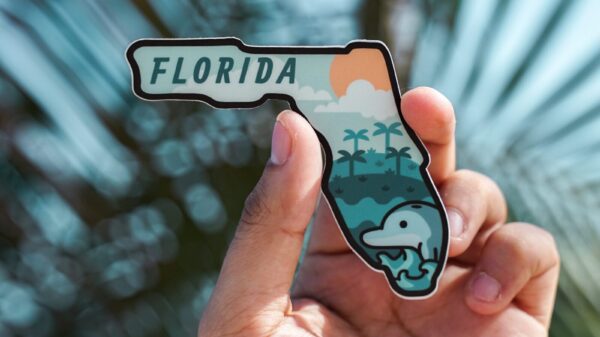Digital marketing is a vast and constantly evolving field, with new technologies and strategies emerging all the time. To navigate this complex landscape, it’s essential to have a solid understanding of the key terms and concepts used in digital marketing.
In this article, we’ll take a look at the top 100 terms every digital marketer should know, along with their definitions and examples.
Digital Marketing Terms:
- A/B Testing: A method of comparing two versions of a web page or email to see which one performs better.
- Above the Fold: The portion of a web page that is visible without scrolling.
- Ad Exchange: A digital marketplace that connects advertisers with publishers who have ad space to sell.
- Ad Network: A company that aggregates ad inventory from multiple publishers and sells it to advertisers.
- Ad Targeting: The practice of using data to select the most appropriate audience for an ad.
- Affiliate Marketing: A marketing strategy in which an advertiser pays commission to a third-party website for driving traffic or sales.
- Algorithm: A set of rules used by search engines or social media platforms to determine which content to show to users.
- Analytics: The process of collecting and analyzing data to inform digital marketing strategies.
- API: Application Programming Interface, a set of protocols used to allow different software applications to communicate with each other.
- Attribution: The process of assigning credit to a particular marketing channel or tactic for driving a specific outcome.
- Automation: The use of technology to automate repetitive tasks in digital marketing.
- B2B: Business-to-Business, a type of marketing that focuses on selling products or services to other businesses.
- B2C: Business-to-Consumer, a type of marketing that focuses on selling products or services to individual consumers.
- Backlink: A link from another website to your website, which can improve your website’s search engine ranking.
- Behavioral Targeting: The practice of targeting ads based on a user’s previous behavior, such as web browsing history or search queries.
- Blog: A regularly updated website or web page containing posts or articles on a particular subject.
- Branding: The process of creating and promoting a brand image or identity.
- Browser: A software application used to access and view websites.
- Call to Action (CTA): A statement or button on a web page or ad that prompts the user to take a specific action, such as signing up or making a purchase.
- Campaign: A set of marketing activities designed to achieve a specific goal or objective.
- Click-Through Rate (CTR): The percentage of users who click on a particular link or ad.
- Content Marketing: A strategy that involves creating and sharing valuable content to attract and engage a target audience.
- Conversion: The process of turning a website visitor into a customer or lead.
- Conversion Rate: The percentage of website visitors who complete a desired action, such as making a purchase or filling out a form.
- Cookie: A small file stored on a user’s computer that tracks their web browsing activity.
- Cost Per Action (CPA): The cost of acquiring a customer or lead through a specific marketing channel.
- Cost Per Click (CPC): The cost of each click on an ad or link.
- Cost Per Impression (CPM): The cost of each time an ad is displayed to a user.
- Customer Relationship Management (CRM): A system for managing customer interactions and relationships.
- Demographics: Characteristics of a population or audience, such as age, gender, or income.
- Digital Marketing: The practice of promoting products or services using digital channels, such as search engines, social media, or email.
- Display Advertising: Advertising that appears on websites or other digital platforms in the form of banner ads, pop-ups, or other visual formats. Display advertising can be targeted to specific audiences based on factors such as demographics, interests, and browsing behavior.
- Domain: The name of a website or web address.
- Email Marketing: The practice of sending promotional emails to a targeted audience.
- Engagement: The level of interaction or activity a user has with digital content or marketing.
- Frequency: The number of times an ad is shown to a user over a given time period.
- Geotargeting: The practice of targeting ads to users in a specific geographic location.
- Google Analytics: A free web analytics service provided by Google that tracks website traffic and user behavior.
- Hashtag: A word or phrase preceded by a pound sign (#) used on social media to categorize content and make it more discoverable.
- Impressions: The number of times an ad is displayed to users.
- Inbound Marketing: A strategy that focuses on attracting customers through valuable content and engagement.
- Influencer Marketing: A strategy that involves partnering with influential individuals or organizations to promote a product or service.
- Keyword: A word or phrase used to optimize content for search engines.
- Landing Page: A web page designed specifically for a marketing campaign or promotion.
- Lead Generation: The process of generating new leads or potential customers through marketing activities.
- Link Building: The process of acquiring backlinks to a website to improve its search engine ranking.
- Local SEO: Search engine optimization that focuses on improving a website’s visibility in local search results.
- Long-Tail Keywords: Longer, more specific keywords used to target niche audiences in search engine optimization.
- Market Research: The process of gathering and analyzing data to inform marketing strategies.
- Marketing Automation: The use of technology to automate marketing tasks, such as email campaigns or social media posts.
- Metadata: Information about a web page, such as its title or description, that appears in search engine results.
- Mobile Optimization: The process of optimizing digital content for mobile devices.
- Native Advertising: Advertising that matches the look and feel of the platform or website it appears on.
- Organic Traffic: Traffic to a website that comes from search engines or other natural sources, rather than paid advertising.
- Pay-Per-Click (PPC): A type of online advertising where advertisers pay each time a user clicks on their ad.
- Persona: A fictional representation of a target audience or customer, used to guide marketing strategies.
- Podcast: A digital audio recording that can be downloaded and listened to on-demand.
- Public Relations (PR): The practice of managing a company’s reputation through media relations, public events, and other communications.
- Quality Score: A metric used in pay-per-click advertising to measure the relevance and quality of an ad.
- Reach: The number of people who see a particular piece of content or marketing message.
- Retargeting: The practice of targeting ads to users who have previously interacted with a brand or website.
- Return on Investment (ROI): The amount of profit or revenue generated from a marketing campaign, divided by the cost of the campaign.
- Search Engine Marketing (SEM): The practice of using paid search advertising to drive traffic to a website.
- Search Engine Optimization (SEO): The practice of optimizing digital content to improve its visibility in search engine results.
- Social Media Marketing: The practice of promoting products or services on social media platforms.
- Split Testing: A method of testing different versions of a marketing message or design to see which one performs better.
- Target Audience: The specific group of people that a marketing campaign or message is designed to reach.
- User-Generated Content (UGC): Content created by users of a brand or product, often shared on social media.
- Video Marketing: The use of video content to promote products or services.
- Viral Marketing: The use of social sharing and word-of-mouth to promote a product or service.
- Webinar: A live or recorded online presentation or seminar.
- Website Analytics: The process of analyzing website traffic and user behavior.
- White Paper: A detailed report or guide on a particular topic or issue.
- Word-of-Mouth Marketing: The practice of promoting a product or service through customer referrals and recommendations.
- XML Sitemap: A file that lists all the pages of a website, used by search engines to crawl and index the site.
- YouTube Marketing: The use of YouTube to promote products or services through video content.
- Ad Impressions: The number of times an ad is shown to a user.
- Ad Position: The placement of an ad on a web page or search engine results page.
- Ad Retargeting: The practice of targeting ads to users who have previously interacted with a brand or website.
- Ad Rotation: The process of displaying different ads in the same space on a web page or search engine results page.
- Anchor Text: The visible text in a hyperlink.
- App Store Optimization (ASO): The process of optimizing mobile apps to improve their visibility in app store search results.
- Attribution Modeling: The process of assigning credit to different marketing channels or touchpoints for driving a particular outcome.
- Average Order Value (AOV): The average amount of money spent by a customer in a single transaction.
- Bounce Rate: The percentage of website visitors who leave a site after viewing only one page.
- Click Fraud: The practice of artificially inflating the number of clicks on an ad through fraudulent means.
- Click-to-Open Rate (CTOR): The percentage of users who click on a link or button in an email after opening it.
- Contextual Advertising: Advertising that is targeted based on the content of a web page or user behavior.
- Conversion Funnel: The process by which a user is converted into a customer or lead, from initial awareness to final purchase.
- Cost Per Lead (CPL): The cost of acquiring a lead through a specific marketing channel.
- Cost Per Mille (CPM): The cost of displaying 1,000 ad impressions.
- Crawler: A program used by search engines to scan and index web pages.
- Customer Lifetime Value (CLV): The total amount of revenue generated by a customer over their lifetime.
- Dark Social: Refers to social media activity that is not trackable or measurable, such as sharing links through email or instant messaging.
- Duplicate Content: Content that appears on multiple web pages, which can negatively impact search engine optimization.
- Exit Rate: The percentage of website visitors who leave a site from a particular page.
- Geo-Fencing: The practice of targeting ads to users within a specific geographic boundary.
- Google AdWords: A pay-per-click advertising platform provided by Google.
- Key Performance Indicator (KPI): A measurable metric used to evaluate the success of a marketing campaign or strategy.
- Chatbot: A computer program that uses artificial intelligence to simulate conversation with human users, often used in customer service or marketing to automate responses and improve efficiency.
In conclusion, digital marketing is a complex and constantly evolving field, and staying up-to-date with the latest trends and terminology is essential for success. By understanding these 100 key terms and concepts, digital marketers can make informed decisions and develop effective strategies to achieve their goals.





































